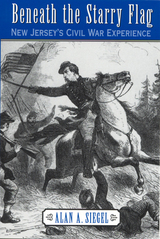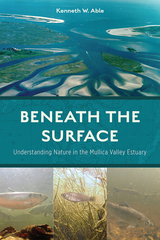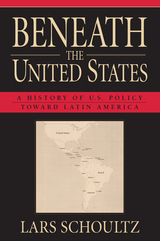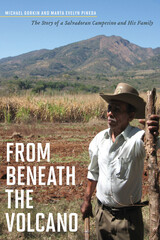
Few events in American history can match the triumph and tragedy of the Civil War. Many books have been written about the War between the States, but until now, none has chronicled—in their own words—the many important roles played by people from New Jersey.
Beneath the Starry Flag is a collection of richly detailed eyewitness accounts by New Jerseyans who lived during the Civil War. Drawing from letters, journals, regimental histories, and newspaper accounts, Alan A. Siegel places the reader in the midst of these desperate times. The book depicts the war years chronologically, from the tense days when one state, then another seceded from the Union, through battles lost and won, to the victory at Appomattox and Lincoln’s funeral procession across New Jersey.
Readers will learn of the remarkable valor of New Jersey soldiers such as John Beech, a Trenton potter who won a Medal of Honor for bravery at Spotsylvania’s Bloody Angle. They will learn too of the sacrifices made by civilians, such as Cornelia Hancock of Salem County, who ministered to soldiers wounded on battlefields from Gettysburg to Petersburg. Siegel also tells of other people and institutions who played very different roles in the war, including Somerset County’s Daniel Cory, who said he would shoot the president if he could, the state’s leading Copperhead newspapers, which denounced the draft and discouraged enlistments, and the State Legislature, which at one point called for a truce and negotiations to end the conflict.
Siegel allows them all, enlisted men and officers, politicians and plain citizens, patriots and conspirators, to speak in their own words in often moving firsthand accounts. Their motives, emotions, and deeds are chronicled in this collection of stories, some which have been out of print for many years, others that have not been heard since they were first written more than a century ago.
[Beneath the Starry Flag is an invaluable addition to what we know about this remarkable time in American history, perfect for the general reader or Civil War historian.]


The Mullica Valley estuary and its watershed, formed over the last 10,000 years, are among the cleanest estuaries along the east coast of the United States. This 365,000-acre ecosystem benefits from a combination of protected watershed, low human population density, and general lack of extensive development. In Beneath the Surface, marine scientist Ken Able helps the reader penetrate the surface and gain insights into the kinds of habitats, animals, and plants that live there. Readers will gain a better understanding of the importance of these shallow waters; how the amount of salt in the water determines where animals and plants are found in estuaries; the day-night, seasonal, and annual variation in their occurrence; and how change is occurring as the result of climate variation. Throughout the book are insightful sidebars telling intimate stories of where various animals came from and where they are going as they travel through the estuary on their way to and from other portions of the east coast. Beneath the Surface emphasizes the kinds and importance of the animals and plants that live beneath the surface of this unique ecosystem.

In this sweeping history of United States policy toward Latin America, Lars Schoultz shows that the United States has always perceived Latin America as a fundamentally inferior neighbor, unable to manage its affairs and stubbornly underdeveloped.
This perception of inferiority was apparent from the beginning. John Quincy Adams, who first established diplomatic relations with Latin America, believed that Hispanics were "lazy, dirty, nasty...a parcel of hogs." In the early nineteenth century, ex-President John Adams declared that any effort to implant democracy in Latin America was "as absurd as similar plans would be to establish democracies among the birds, beasts, and fishes."
Drawing on extraordinarily rich archival sources, Schoultz, one of the country's foremost Latin America scholars, shows how these core beliefs have not changed for two centuries. We have combined self-interest with a "civilizing mission"--a self-abnegating effort by a superior people to help a substandard civilization overcome its defects. William Howard Taft felt the way to accomplish this task was "to knock their heads together until they should maintain peace," while in 1959 CIA Director Allen Dulles warned that "the new Cuban officials had to be treated more or less like children." Schoultz shows that the policies pursued reflected these deeply held convictions.
While political correctness censors the expression of such sentiments today, the actions of the United States continue to assume the political and cultural inferiority of Latin America. Schoultz demonstrates that not until the United States perceives its southern neighbors as equals can it anticipate a constructive hemispheric alliance.


Luis, his mother, his wife, his in-laws, his children, and some neighbors recall in a simple and often eloquent manner their experiences of everyday life before, during, and after the civil war. Nina Bonafacia, Luis’s mother, tells of the days before the war when two of her daughters were murdered and she fled with her family to a refugee camp. Julia, Luis’s wife, recounts her life as a guerrillera during which, incidentally, she gave birth to the first two of her eight children. Joaquin, a neighbor and comrade-in-arms, discusses how he and others took control of the land of Comunidad Guazapa and began rebuilding in those turbulent days and months right after the war. Margarita and Francisco, the two oldest children, with candor and insight discuss the trajectory of their lives and that of the postwar generation. And at the center of all these stories stands Luis, the guerrillero, farmer, neighbor, husband, father—and raconteur par excellence.
In sum, the multiple voices in From Beneath the Volcano combine to form a rich tapestry displaying a story of war, family, and community and provide a never-before-seen view of both the past and present El Salvador.
READERS
Browse our collection.
PUBLISHERS
See BiblioVault's publisher services.
STUDENT SERVICES
Files for college accessibility offices.
UChicago Accessibility Resources
home | accessibility | search | about | contact us
BiblioVault ® 2001 - 2024
The University of Chicago Press









